Frick Madison
Frick Madison was open from March 18, 2021, through March 3, 2024.
The Frick, Reframed
“No barriers. No texts. No heavy gold fabric...It’s just you and the masters.”—The New York Times(link is external)
“We enter into new relationships with beloved works that we grew up with and pay attention to others that we never properly focused on before.”—The Wall Street Journal(link is external)
“...the perfect way to see the Frick’s masterpieces as if for the first time. Perfectly lit, generously spaced, and hung at eye level against gunmetal grey walls, they seem to glow from within.”—Financial Times(link is external)
Frick Madison served as the Frick’s temporary home during the renovation of its historic buildings at 1 East 70th Street. Frick Madison marked the first time that a substantial gathering of collection highlights were presented outside the walls of the museum’s Gilded Age mansion. The building also housed a temporary reading room in which the Frick Art Research Library continued to serve students and scholars. The residency lasted from March 18, 2021, through March 3, 2024, and we will return to the Frick’s permanent East 70th Street home in April 2025.
Frick Madison was located at 945 Madison Avenue at 75th Street, the former site of the Met Breuer and, previously, the Whitney Museum of American Art, which commissioned the building from architect Marcel Breuer in 1966. The Frick created a sequence of gallery spaces at Frick Madison that reflected the museum’s traditional emphasis on intimate encounters with both art and architecture and allowed direct access to objects without the interference of vitrines or stanchions. The installation at Frick Madison respected the forms and materials of Marcel Breuer’s modernist creation of stone and concrete, juxtaposing beloved Frick masterpieces with the building’s distinct architectural features, such as its signature trapezoid windows.
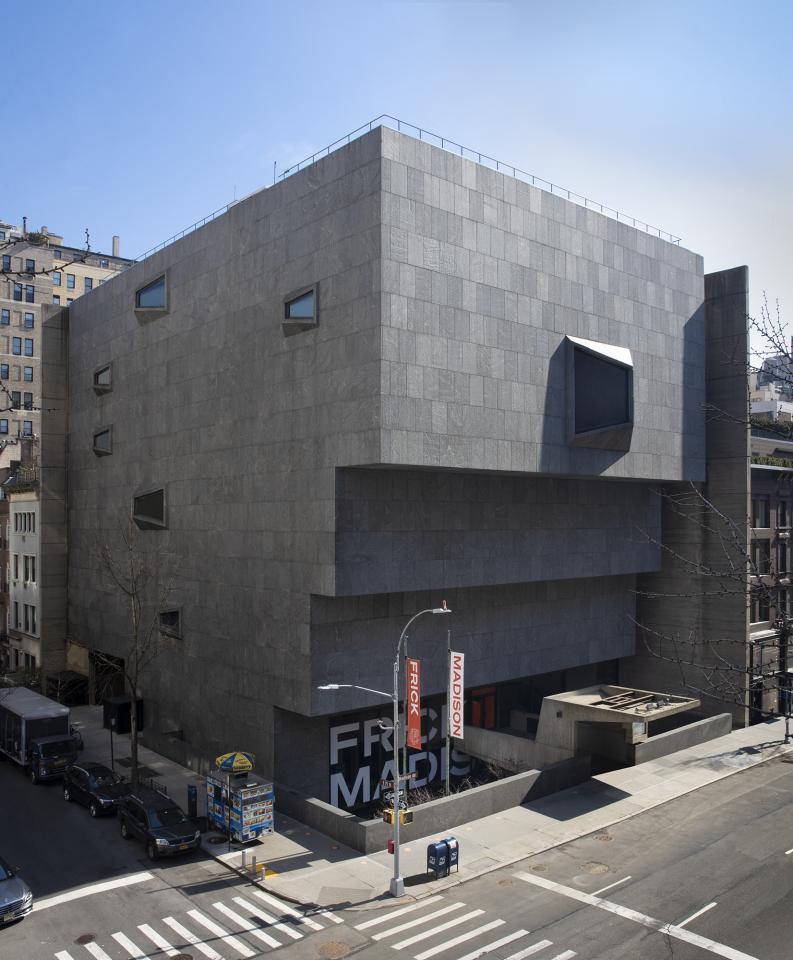
New Perspectives on Old Masters
In a departure from the Frick’s customary presentation style, works were organized at Frick Madison chronologically and by region, allowing for fresh juxtapositions and new insights about treasured paintings and sculptures by Bellini, Clodion, Gainsborough, Goya, Holbein, Houdon, Ingres, Piero della Francesca, Rembrandt, Titian, Turner, Velázquez, Vermeer, Whistler, and many others. The installation also spotlighted the Frick’s impressive holdings of decorative arts and sculpture, as well as rarely seen works.
The second floor was dedicated to works of art from Northern Europe, including a room devoted to Rembrandt’s masterpieces. In one gallery, the Frick’s Vermeers—seldom shown in such unmediated proximity—surrounded visitors on three walls. For the first time ever, the Frick’s eight portraits by Van Dyck were displayed together in one room.

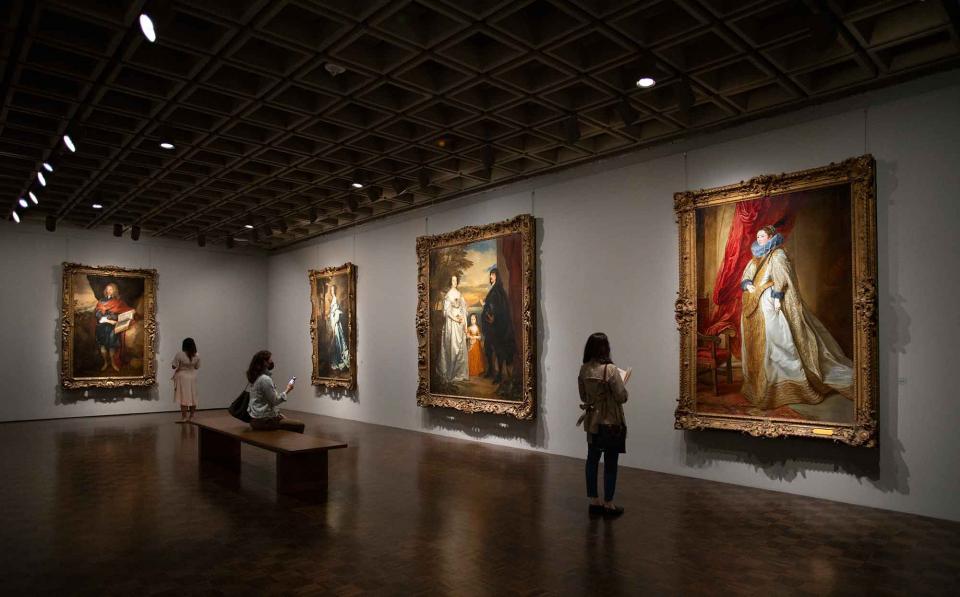
Italian and Spanish art was shown on the third floor of Frick Madison. Rare gold-ground panels by early religious artists were displayed, and a central cross-shaped space showcased grand Renaissance works by Titian and Veronese, along with Venetian masterpieces. Bellini’s beloved St. Francis in the Desert was shown in splendid isolation adjacent to one of Breuer’s trapezoidal windows. Visitors also encountered an unprecedented arrangement of nine Spanish paintings by Velázquez, Murillo, El Greco, and Goya.
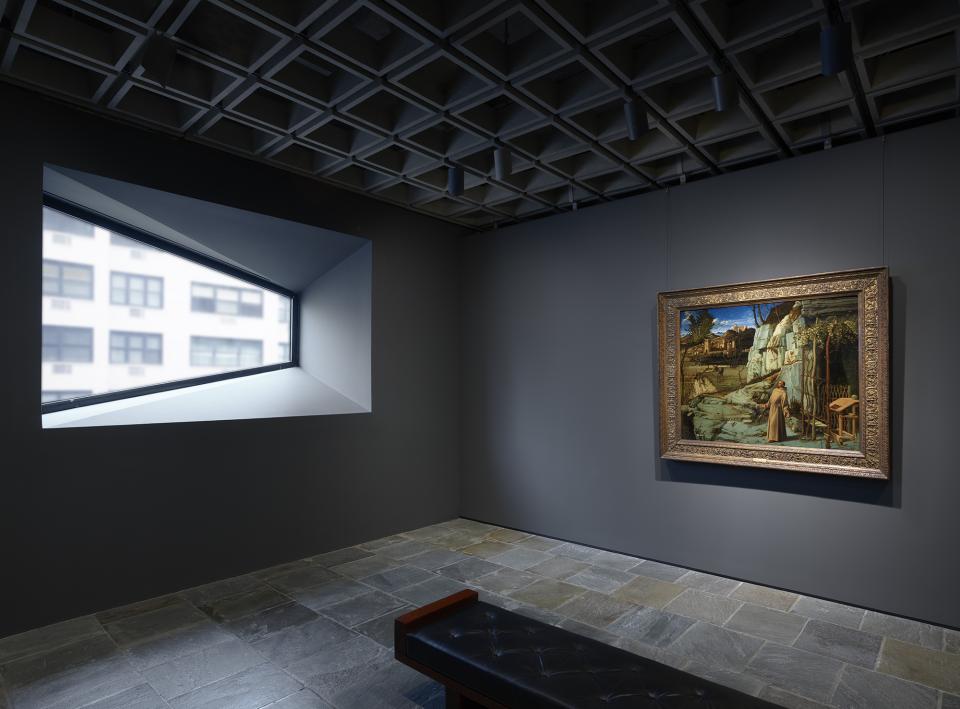
The fourth floor displayed works by French and British artists. Seven canvases by Gainsborough hung alongside portraits by other noted British masters, representing nearly one hundred years of British portraiture. A room with landscapes by Constable and Turner embodied profoundly opposing approaches to the genre. Another gallery featured four beloved full-length portraits by James McNeill Whistler. This floor also featured eighteenth-century French paintings, most notably Jean-Honoré Fragonard’s Progress of Love series, all fourteen canvases of which were shown together for the first time in the museum’s history. A room of later French masters including Ingres and David led to a final gallery of Impressionist works.
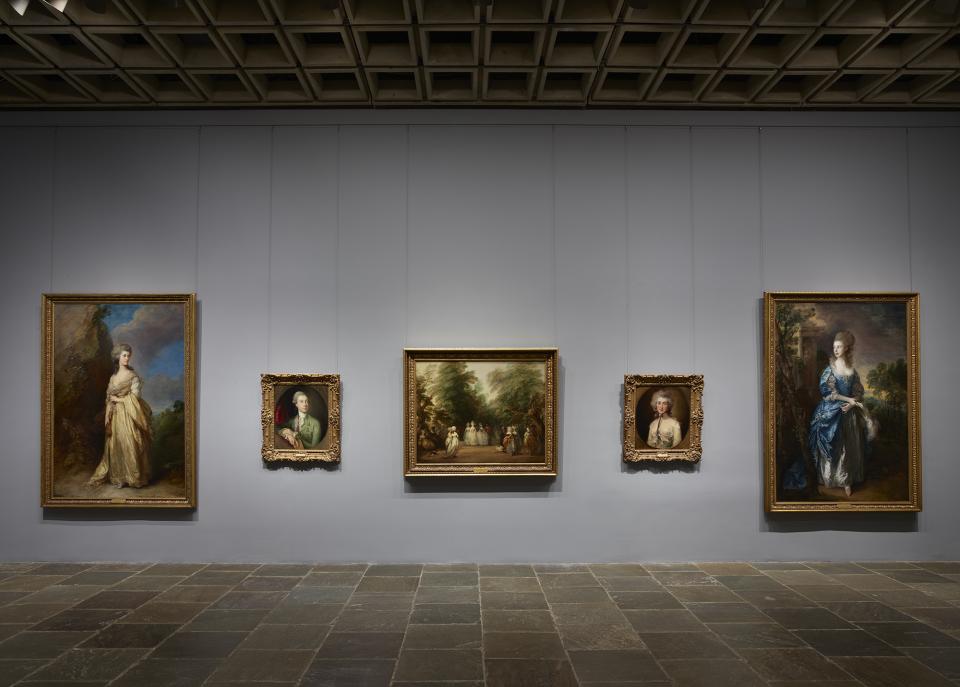
New Ways of Appreciating One of America’s Most Significant Sculpture And Decorative Art Collections
To highlight the importance of the museum’s holdings in sculpture and decorative arts, the first object visitors encountered on each floor of Frick Madison was a sculpture: on the second floor, Barbet’s breathtaking Angel; exquisite marble busts by Laurana and Verrocchio on the third floor; and, on the fourth floor, two Houdon portrait busts and Clodion’s stunning Dance of Time clock.
On the third floor, an entire gallery was dedicated to works in bronze, evoking a fifteenth- or sixteenth-century studiolo. Also on prominent view for the first time was Francesco da Sangallo’s St. John Baptizing (the artist’s only signed bronze), placed atop a replica of the marble font on which it originally stood. The third floor also featured groupings of clocks and Limoges enamels, as well as a space devoted to two prized seventeenth-century Indian carpets. One arresting gallery displayed floor-to-ceiling porcelain pieces from Europe and Asia organized by color, underscoring the strong confluence of visual traditions.
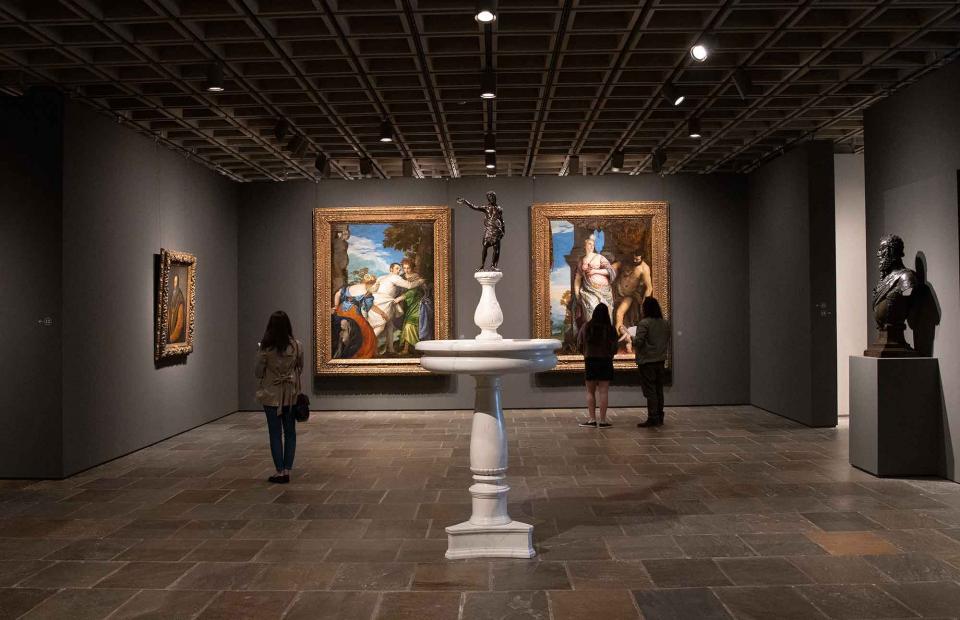

Visitors encountered important French eighteenth-century furniture and ceramics on the fourth floor, including a desk by Riesener made for Marie-Antoinette, several significant Sèvres objects, and a table and pair of candelabra by Gouthière.
Exhibition Team and Support
This installation was organized by the Frick’s curatorial team, led by Xavier F. Salomon, Deputy Director and Peter Jay Sharp Chief Curator, with Curator Aimee Ng, Assistant Curator of Sculpture Giulio Dalvit, and former Curator of Decorative Arts Charlotte Vignon, now director of the Musée National de Céramique in Sèvres. The plan was created in consultation with the Frick’s longtime exhibition designer Stephen Saitas and Selldorf Architects, the firm responsible for the institution’s building project.
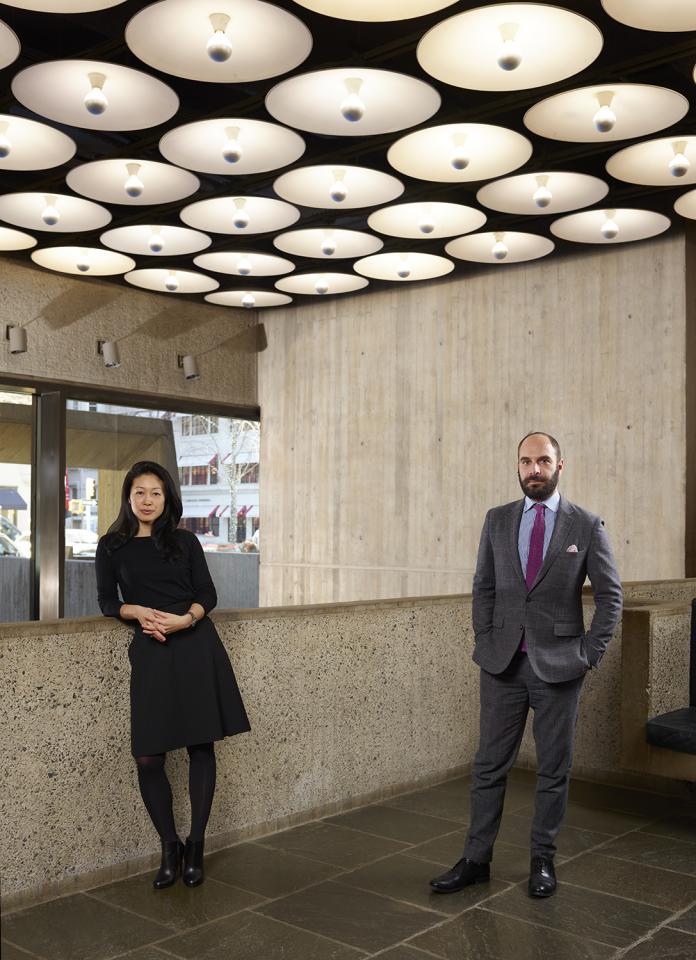
Major support for the installation at Frick Madison was provided by Bloomberg Philanthropies, Denise Littlefield Sobel, an anonymous gift in memory of Melvin R. Seiden, The Christian Humann Foundation, and by David and Julie Tobey. Additional funding is generously provided by the Samuel H. Kress Foundation, Acquavella Family Foundation, The Arthur F. and Alice E. Adams Charitable Foundation, Larry Gagosian, Drue and H.J. Heinz II Charitable Trust, the Malcolm Hewitt Wiener Foundation, The Honorable and Mrs. Earle Mack, The Gladys Krieble Delmas Foundation, Joanne Payson in memory of John Whitney Payson, Fabrizio Moretti, the David L. Klein, Jr. Foundation, Elizabeth F. Stribling and Guy Robinson, Eiko and Michael Assael, Christie’s, Elise Frick, Hubert and Mireille Goldschmidt, Jane Richards in honor of Elizabeth M. Eveillard, and Sotheby’s.